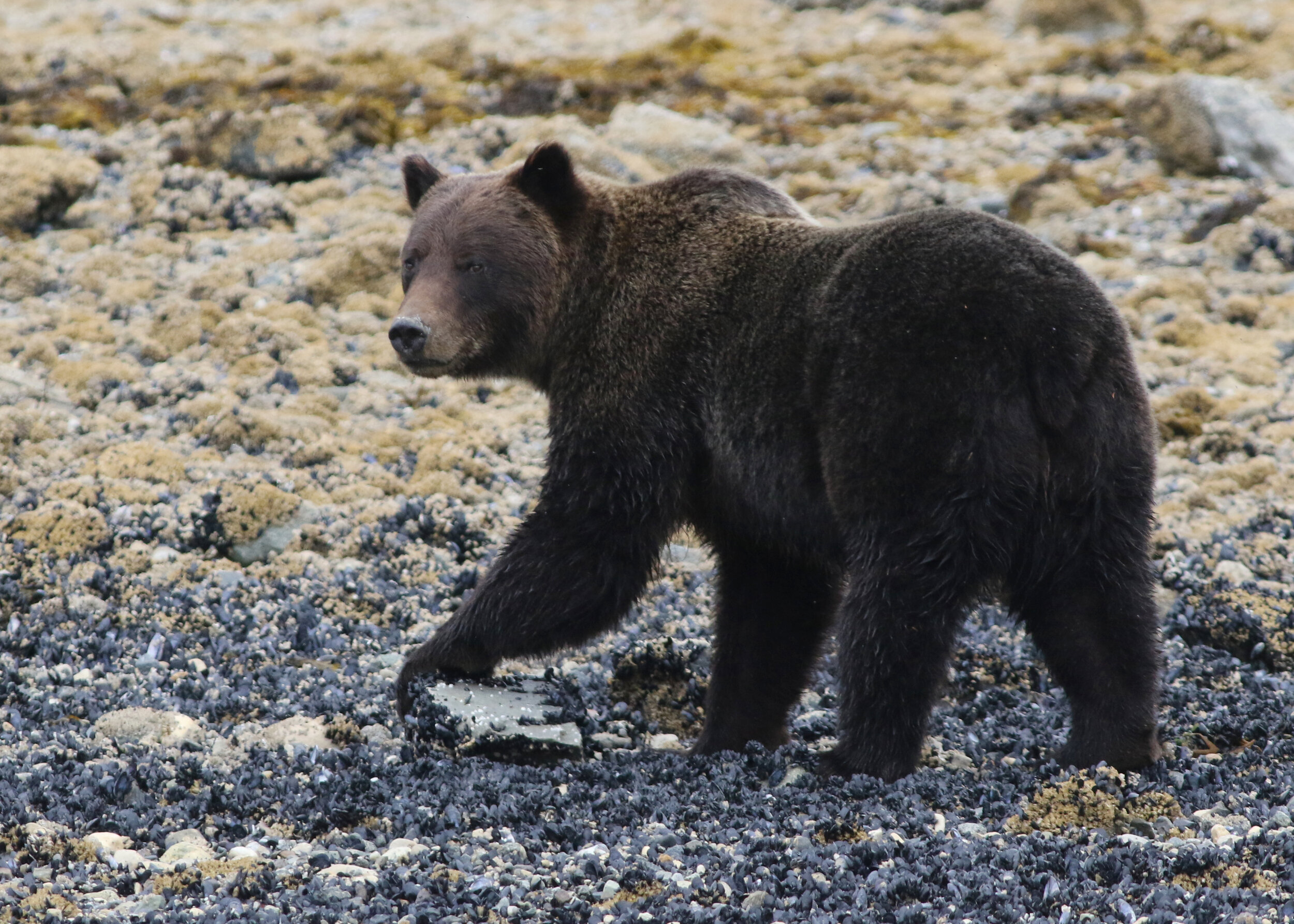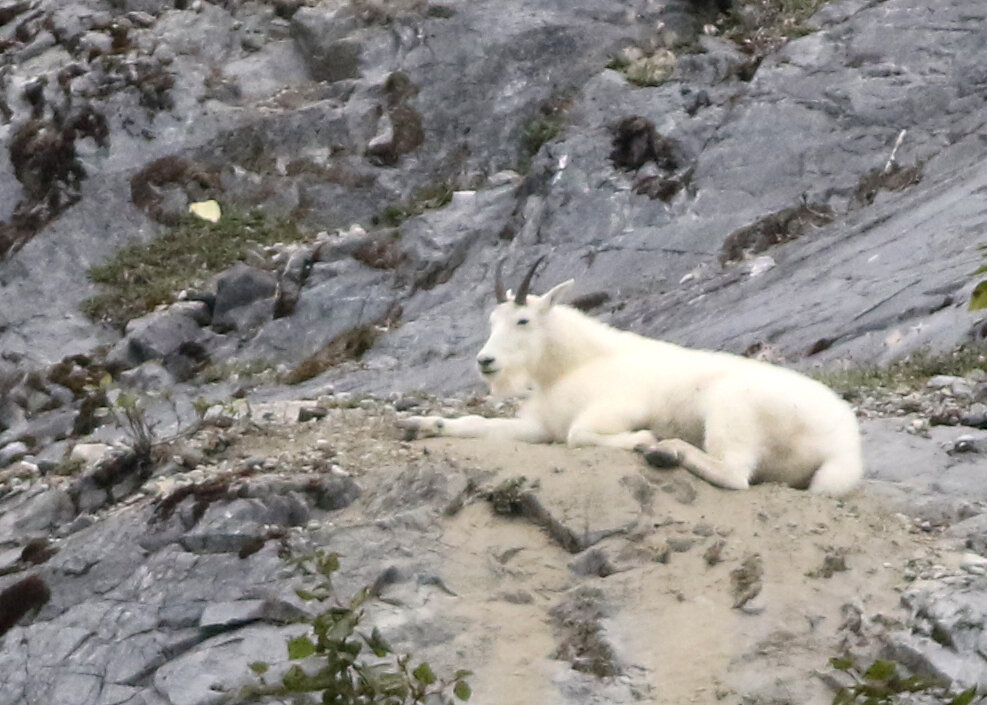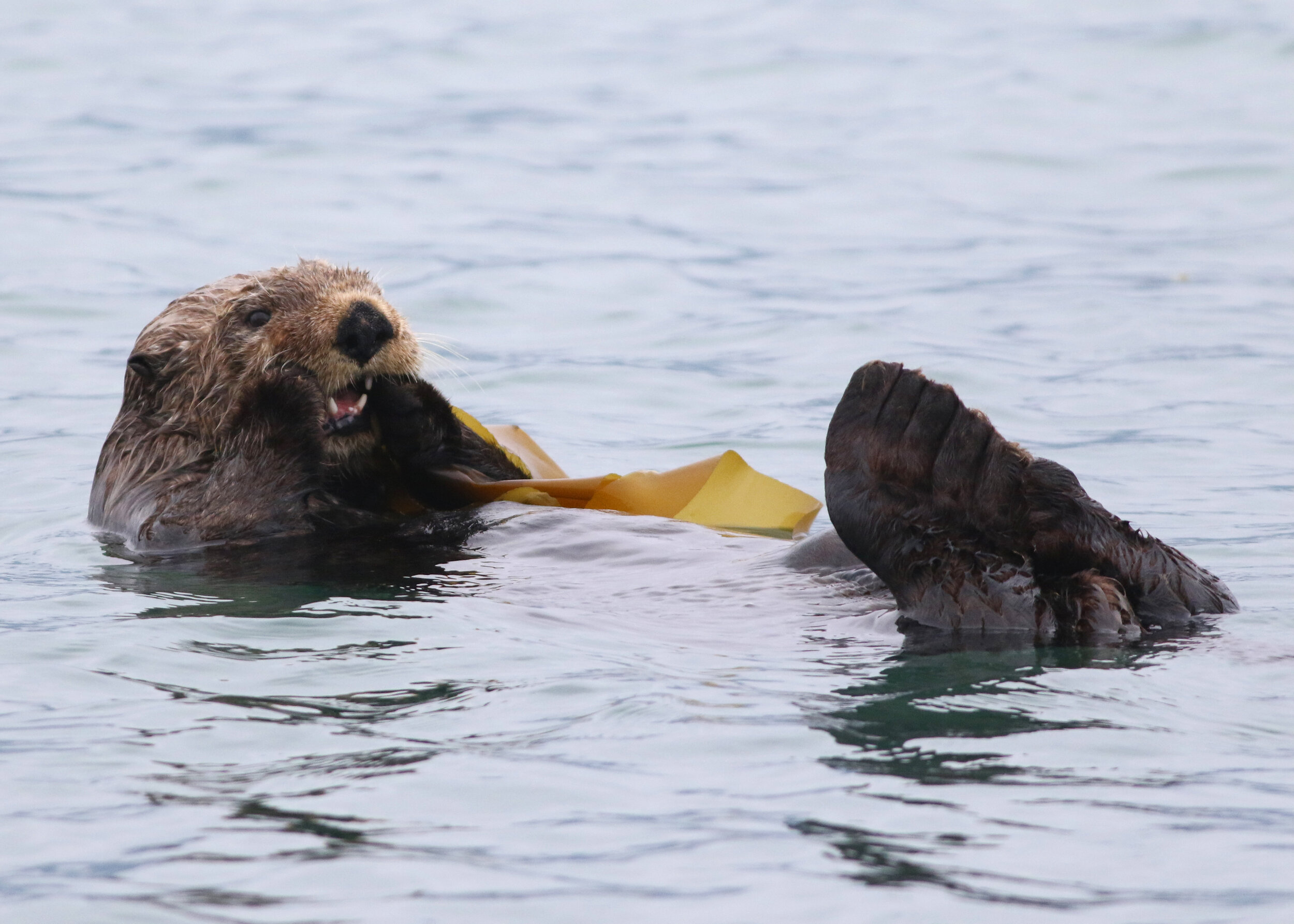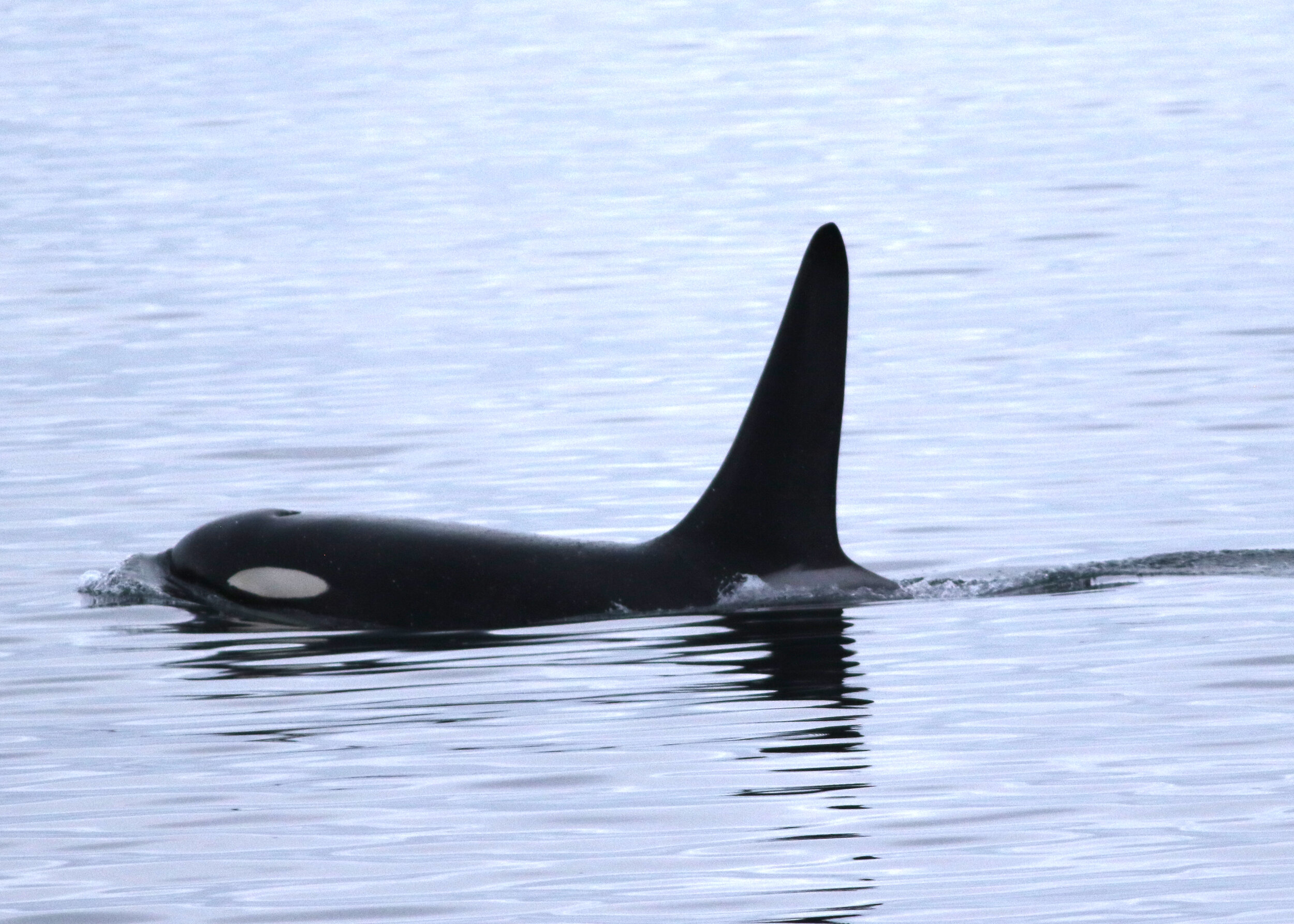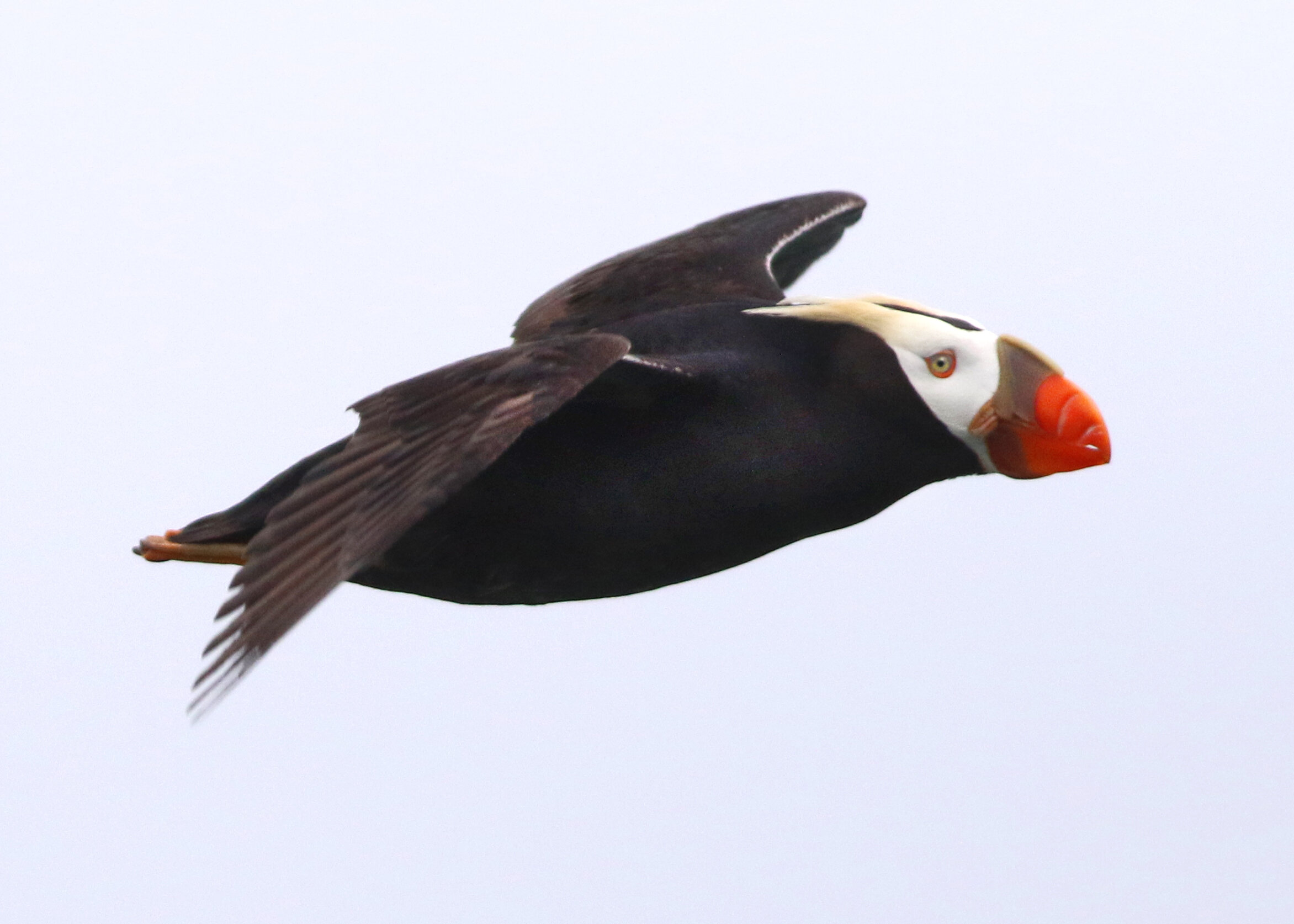Tufted Puffin, Fratercula cirrhata
By an incredible stroke of good fortune, I have had the opportunity to visit Glacier Bay National Park three times in two years. Each was an experience beyond words, with stunning vistas of Southeast Alaskan mountains and fantastic views of truly wild creatures.
Unlike most national parks, the main attraction- the glaciers- are pretty much only accessible by boat. The first time I visited the park in late August of 2018, my girlfriend and I embarked on the National Park dayboat to reach the glaciers. The knowledgable naturalist helped point out wildlife and explain the history of the various glaciers as we traveled. The second time I went was in August of 2019. This time, I went with my friend Captain Billy of Wooshkeetan Tours out of Hoonah, AK and wow, David Attenborough could not have gotten better creature encounters. Orcas swam right under out boat, we crept up on a brown bear flipping rocks for clams, sea otters lazily floated right past the side of the boat…it was truly indescribable. By the time we got to the seabird nest rocks, I was utterly beside myself.
My biggest vanity point is my hair. It is short, and I love it when it is super bedraggled and tufty- the tuftier the better. So I have great respect for the Tufted Puffins, and was practically leaping off of the boat with excitement as we carefully approached the rocks where already, we could see hundreds of Black-legged Kittiwakes at their nests. Pelagic Cormorants, Pigeon Guillemots, and Common Murres also peppered the rocks. And then there, on a small ledge, was a group of six Tufted Puffins! Captain Billy skillfully moved the boat around the rocks so we could see their marvelous tufts from all angles.
The tufts of the Tufted Puffin show up alongside its bright red bill and red feet during the breeding season. Once summer ends, the tufts are actually moulted off. Tufted Puffins will make their nests by digging a shallow burrow or creating a nest within the crevice of rocky cliffs. Like many seabirds, they breed on isolated islands. Tufted Puffins range throughout the North Pacific Ocean, and are a familiar sight from both Pacific Northwest and Russian coasts. The Russians know the Tufted Puffin by the name toporok, which means “small axe.” Looking up at its big red bill, I could sort of see the resemblance, though to me it looked it is so big that it seems as much a small maul as a small axe!
Like many seabirds, Tufted Puffins are suffering from climate change. The winter of 2016-2017 saw a mass die-off of Tufted Puffins near St Paul island in Alaska. Including fly-bys, I only counted about 10 Tufted Puffins near these rocks in Glacier Bay. Just a year earlier, in 2019, there had been at least several dozen. While we were visiting the park a few weeks earlier in 2019 than we were in 2018, these numbers still do not reflect well on the well-being of the puffin population, especially considering seabird numbers have been falling dramatically.
Now that I no longer live in Hoonah, I do not know when I will return to Glacier Bay. I hope that I can get back there one day. It saddens me, though, to think that the next time I return, it will inevitably be very different. Whether the glacier is smaller or there are fewer seabirds, climate change is going to continue to irrevocably shape the park, and not necessarily for the better. In the meantime, I will hold close the memories of Glacier Bay’s wild creatures, and paint them as beautifully as a I can so that people might become inspired to help protect them.
Trip list:
Mammals: Steller’s Sea Lion, Orca, Humpback Whale, Sea Otter, Brown Bear, Sea Otter, Dall’s Porpoise, Harbor Seal
Birds: Black-legged Kittiwake, Pelagic Cormorant, Red-necked Phalarope, Glaucous-winged Gull, Mew Gull, Fork-tailed Storm-petrel, Bald Eagle, Common Raven, Black Oystercatcher, Surf Scoter, Kittlitz Murrelet, Marbled Murrelet, Common Loon, Red-throated Loon, Pigeon Guilemot, Tufted Puffin, Horned Puffin, Common Murre, Northwestern Crow, Great Blue Heron


